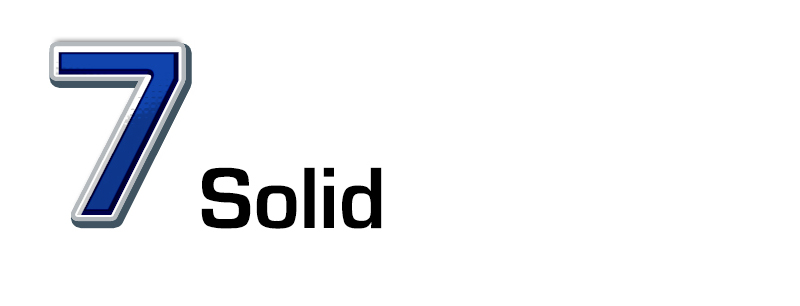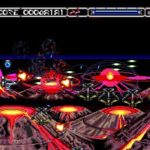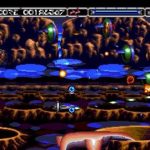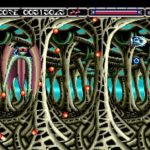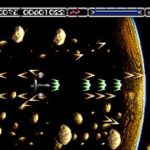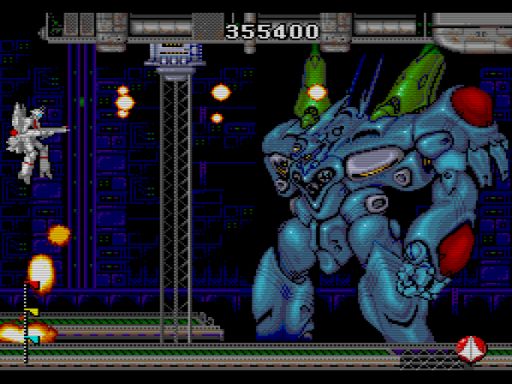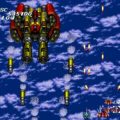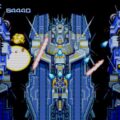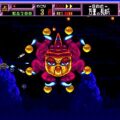Developer: Right Stuff Corp. Publisher: NEC Released: 1993 Genre: Shooter
One of the greatest drawbacks of the Turbo Grafx-16’s failure is that we weren’t exposed to the breadth of its library. In Japan the PC Engine CD has a robust lineup of games covering all genres. Conversely in the US we mostly received shooters. I like the genre and all but Jesus did they overdo it. To stand out in this highly saturated crowd a game needed a unique hook. Syd Mead’s Terraforming banks on its visual design to do just that. While Terraforming excels in the graphics department the gameplay is only solid yet dull.
The Terraforming in the game’s title is the reason for your adventure. In the future mankind has once again made Earth inhospitable. This prompts a journey to the stars in search of a new home. The condition of the planet doesn’t matter; with terraforming technology any environment can be a veritable oasis for humanity. And so the journey begins.
The story is in the instruction manual and is not unique. In fact that is the premise for any number of shooters like Bio-Hazard Battle and Gaiares. But they do not have Terraforming’s art direction. Sci-fi visionary Syd Mead handled the art direction for Terraforming and the results are incredible. Terraforming is one of the most impressive games on the system visually and artistically. The game throws around an insane number of sprites and never slows down. Each stage varies between one layer and up to five layers of scrolling. But even the simpler stages feature some insane effect that defies the hardware.
The real achievement of the game’s art direction is that it makes each world distinct. Rather than a series of video game tropes each planet has its own ecosystem with their own indigenous life forms. Very few enemies appear in more than one stage. Even when the game does veer into well-worn territory it still puts a unique spin on it. The only disappointment is the bosses, which feel uninspired. But when the rest of the package is this stellar, including the soundtrack it is little reason to complain.
Terraforming is similar to R-Type in some respects but simpler. If you wait your ship will charge up a more powerful blast in seconds like that game but faster. Your standard cannon is never replaced but can be upgraded to a powerful degree. In fact most of your secondary weapon choices are overpowered. You have three weapon choices; the wide shot, homing Vulcan and laser. Each can be powered up to an insane degree that makes the game trivial. While they have their drawbacks (the homing shot is weak, the laser only fires forward) there are only a few instances where one is the clear favorite.
With its high production values and solid mechanics Terraforming has the makings of a classic. But in actuality the game is solid and nothing else. It certainly tries its best to be thrilling. This is an incredibly fast paced game for the most part but it is also predictable. Waves come in set patterns and rarely deviate. When they do it feels cheap and unearned. The game does have some cool moments; when stage two’s volcanoes erupt the screen flashes and you are left to navigate using silhouettes. If there were more moments like this the game would have been special. Instead you spend far too long fighting predictable waves in levels that run longer than they should. At eight levels Terraforming is long but by the end you will simply want to be over.
Compared to most shooters Terraforming falls on the easy side on the default difficulty. As you power-up you can take more hits; each hit downgrades your weapon. At full power you can survive six or seven hits before death. The game is not shy with its power-ups, almost to its detriment. It takes a few minutes at most to achieve max power at which point you will breeze through the game, especially if you use the homing Vulcan. Even when you die the game is generous enough to provide at least one power-up. The only choke point I encountered was the last level, an unfair assault on a capital ship a la R-Type. But by then you will have amassed plenty of extra lives to zerg it.
The game’s hard mode in my opinion should have been the default. The difference is night and day. Enemies are more aggressive and take more shots. Certain levels like stage three are an absolute nightmare but still manageable with the right weapon. Weapon switching in general becomes near imperative to survive with the lasers ability to pass through walls becoming invaluable. Even the lazy bosses put up more of a fight. I do not normally play through a game twice on different settings but was curious and feel this is the way to play the game.
In Closing
Terraforming is a solid game but not the sensation it could have been. The gameplay does not match the insane production values. There are stronger titles in the genre I would buy first but this is a good 2nd pick. Unfortunately it is expensive as this was one of the last US releases for the Turbo Duo.
